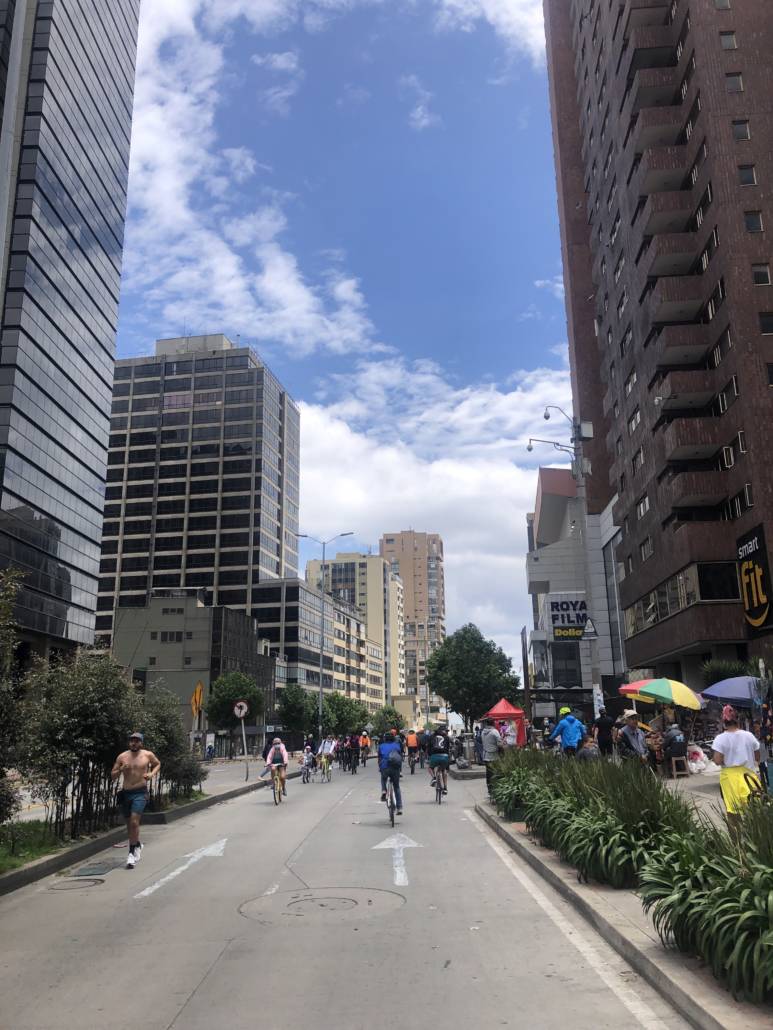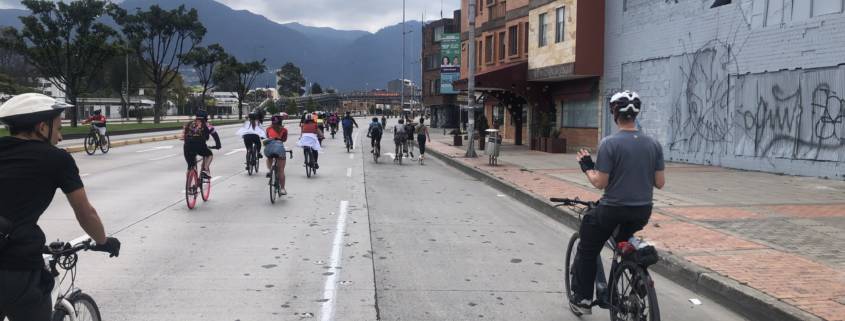CalBike Staffers Reflect on Bogotá Bicycle Adventure
In March, the city government of Bogotá, Colombia, through BiciActiva, invited three members of CalBike’s staff on an all-expenses-paid bicycling tour of Bogotá and its environs. It was an amazing cross-cultural experience that showed the potential to build biking infrastructure and culture with a tight budget and a lot of creativity.
CalBike staff witnessed cargo bikes and daily commuters in the city center and neighborhoods and saw masses of recreational riders in bike jerseys riding popular routes over the weekend. We traversed Bogotá via a vast, connected network of ciclorrutas, brightly painted and often protected bike lanes and off-street paths. These ciclorrutas are used by commuters, vendors, cargo bikes, and people of all ages to travel all over the city, separated from high-traffic automotive routes.
Colombia is not a wealthy country, nor is Bogotá a wealthy city. But the Bogotanos have built a city of bicycles and a culture of bicycling that many California cities can only dream about.
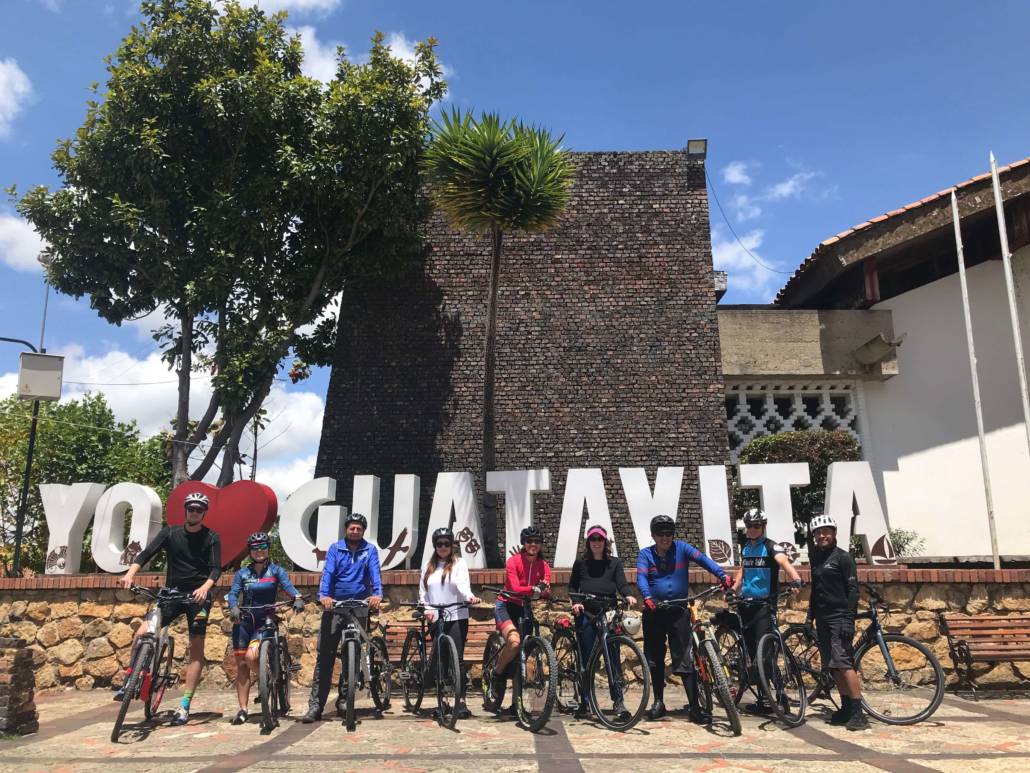
All over the city, we rode on protected bike lanes that connected one to the next. Around us, the streets were filled with buses, motorcycles, and taxis — and just a few individually owned cars. Along with the bike lanes, dedicated bus lanes crisscrossed the city. On the outskirts of town, we saw hundreds of people riding up into the hills for fun with friends.
And on Sunday, 121 kilometers (75 miles) of city streets were closed to cars and filled with people of every social class, every race, young and old, during the weekly Ciclovía, all of them biking, walking, rolling, or skating. A group of teens popped wheelies. A grandmother and grandchild walked together. A little girl trailed her father on a tiny bike. Two young people skated by dressed to the nines. It was such a beautiful vision that, at times, it felt like a dream!
Spending four days in the bicycling capital of the Western Hemisphere with Colombian bike advocates was incredibly inspiring, and the staff returned ready to push even harder to make California’s cities more like Bogotá, with webs of connected bike infrastructure everywhere. Jenn, Kevin, and Dave share their reflections on their experience.
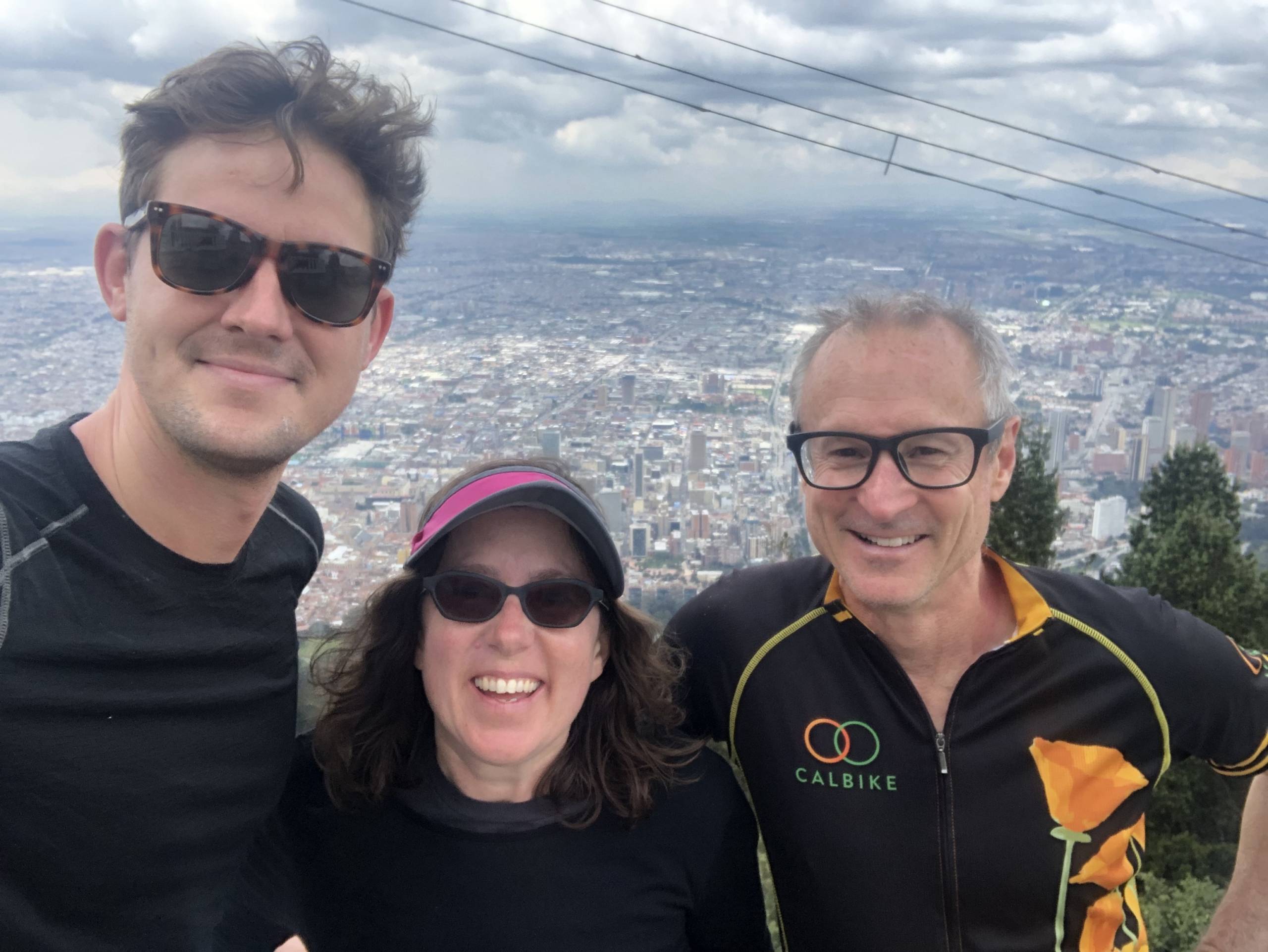
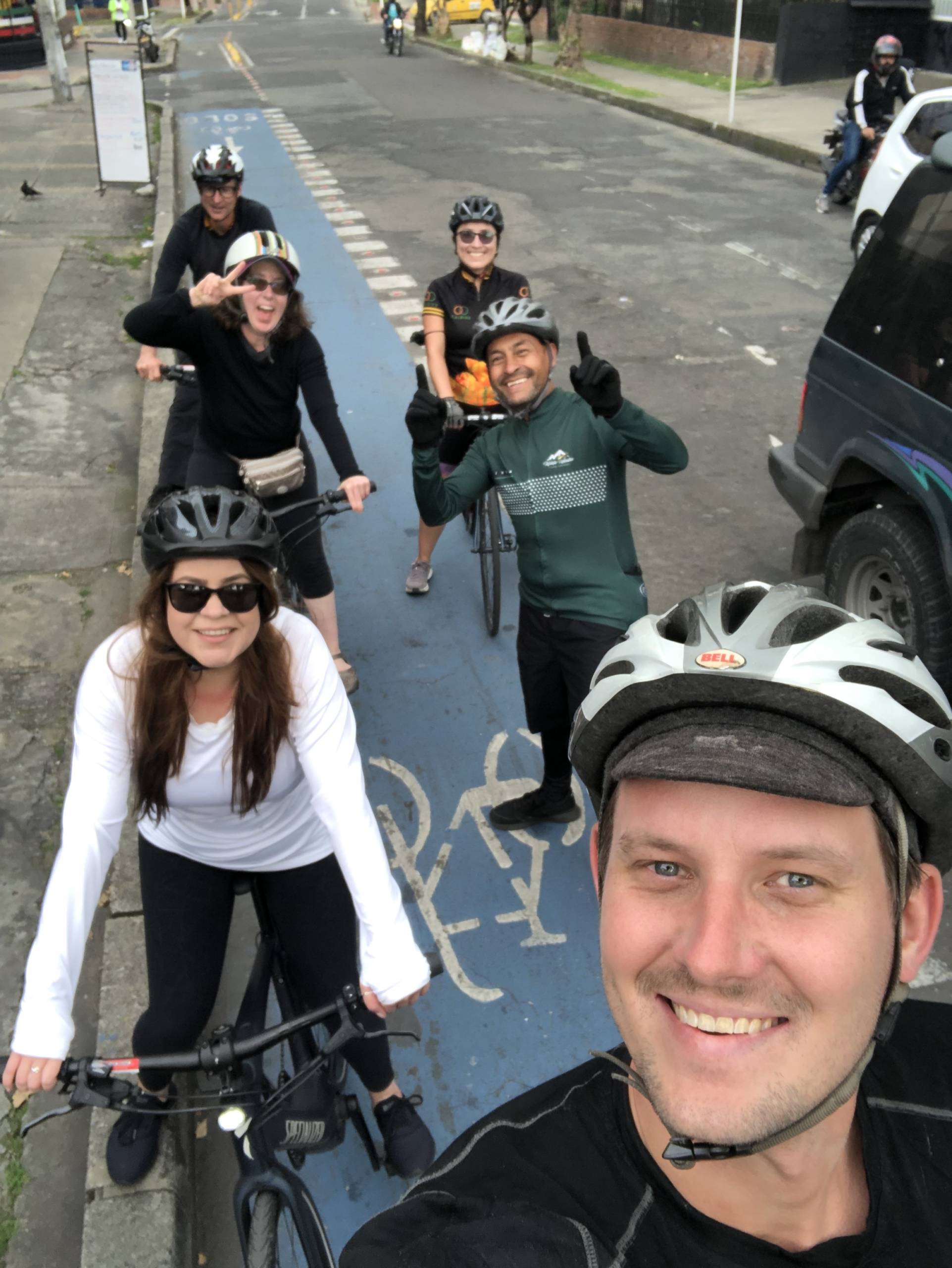
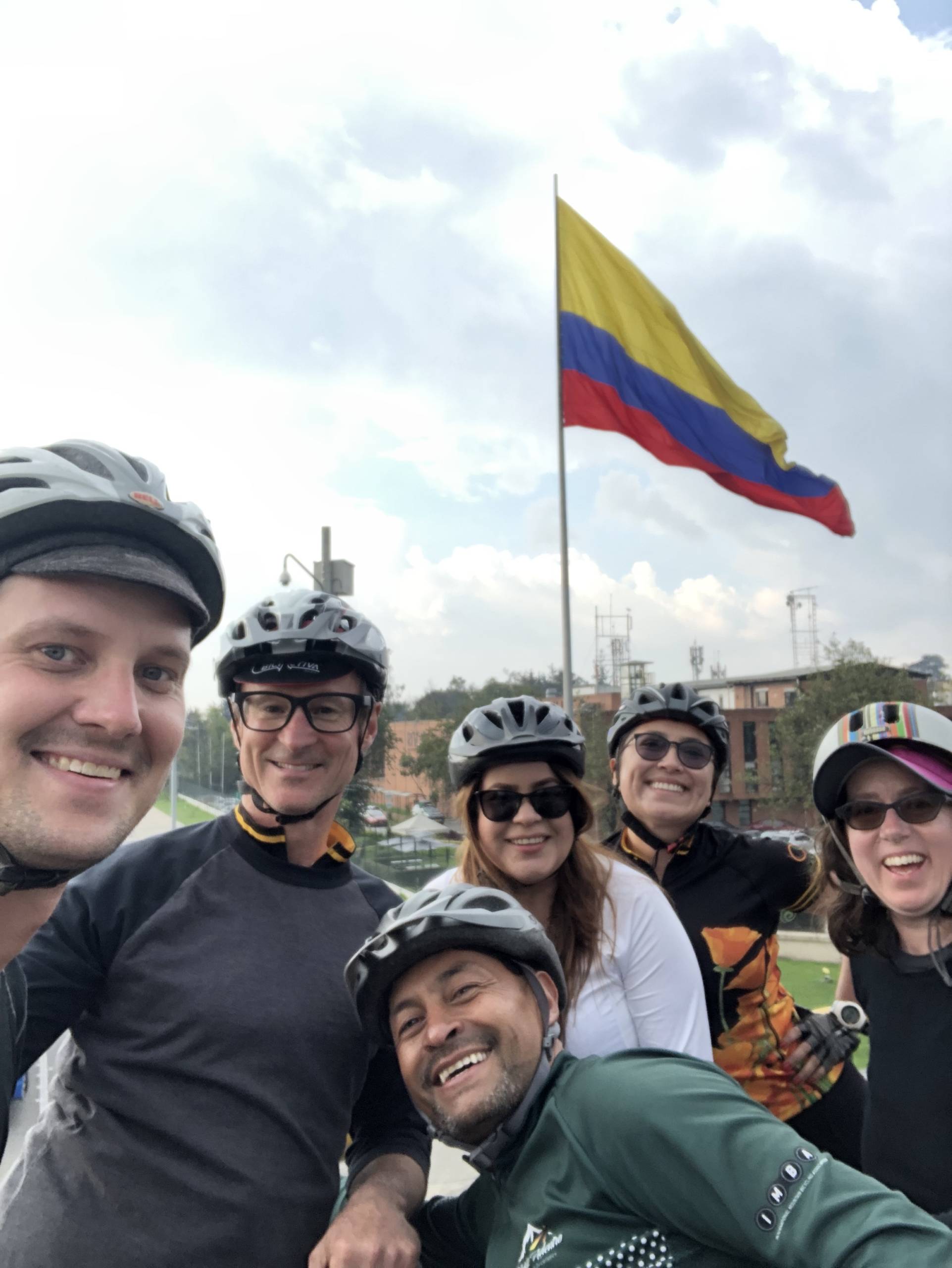
What was the most inspiring thing about your trip to Bogotá?
Jenn: The thing that struck me the most was the culture of bicycling! There is a very different feel to the traffic culture. I live in Berkeley, one of the more bikeable cities in California, and people regularly harass me even though I’m following the rules. Drivers often assume that cars have the right of way even when they don’t. In Colombia, as our hosts told us repeatedly, people on bikes always have the right of way! It’s not the people on bikes who understand this. Drivers yield to bikes, and I almost got the feeling that they were protecting us.
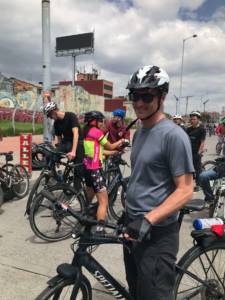
Dave: The most inspiring thing was Ciclovía — 121 kilometers of major thoroughfares closed to cars and open for people to bike, run, skate, or whatever. It completely transforms the city every single Sunday. We should figure out how to do that here because doing it a few times a year just doesn’t make the same statement. A weekly event normalizes the idea that streets sometimes should be used for human joy instead of automobile movement.
Kevin: Like Dave, I was struck by Ciclovía. I have enjoyed LA’s CicLAvia for the past few years, but to participate in the original event in Bogotá (which has been operating since the mid-1970s!), was both an honor and a dream come true. Riding a bicycle is my favorite way to explore a city, and it was so special to be able to explore Bogotá during Ciclovía, an event that should be a model for cities across the world.
What made a culture of bicycling possible in Bogotá?
Jenn: I don’t know enough about the history of bicycling in Bogotá to fully answer that question, except to say that visionary leadership beginning many decades ago helped to create the infrastructure and build a culture. But one thing that really struck me was how much bicycle advocacy continues to thrive and make a difference. Lorena Romero Fontecha, one of our new Colombian friends, who is a committed bike advocate and the driving force behind Radio Biciactiva, showed us a particular protected bike lane and told us an inspiring story that happened just in the past couple of years: She said that on a dangerous street with fast-moving car traffic, neighbors decided that the street needed a protected bike lane. They asked the city — to no avail. So they went ahead and installed their own pop-up, guerrilla-protected bike infrastructure. The city ripped it out. So what did they do? They installed it again! Again, the city ripped it out. When they installed it a third time, the city gave up and went ahead and added more resilient materials to make it permanent.
Dave: I don’t know, but what struck me the most was how intense the recreational bicycle culture was. The roads leading to the hills outside of town were packed with bicyclists, thousands upon thousands, with whole neighborhoods of restaurants and businesses set up to serve them. The popularity of bicycling for fun clearly supported the development of bikeways for transportation.
What did you bring back to your work for transportation justice here in California?
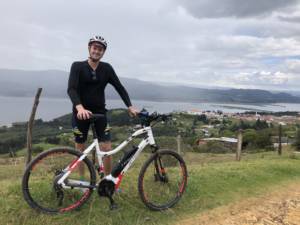
Kevin: Our travels in and around Bogotá provided me with a clearer picture of how we might reshape California’\ transportation system and culture. I say culture because I sensed a kind of mutual respect and camaraderie infused in the network of ciclorrutas and city streets that I feel is often missing from California’s roadways. On Bogotá’s streets, there is truly a symphony of movement. And in Bogotá, the bicycle plays just as important a role for industry and transport as it does for recreation and joy. The bicycle is provided its own respected space separate from and alongside cars, motorcycles, pedestrians, buses, trains, and shared vehicles. I admired the sharing of space I saw throughout the city and felt a sense of community with other road users.
And finally, what was the most fun part of your trip?
Dave: Ciclovía. Dancing in the streets with my fellow travelers. And strengthening the friendships among Colombian and Californian bike and justice advocates.
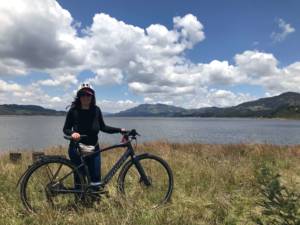
Jenn: Well, for me, surprisingly, it was going mountain biking. I am a committed bike commuter, and I get a lot of joy doing my errands by bike, but I have never been very athletic or much of a recreational cyclist. I had never been mountain biking, and boy, was it fun! Our amazing bicycling tour guide, Andrés from Monte Adentro, took us all around Bogotá to explore the urban infrastructure but also took our group up into the Andes to ride around near the town of Guatavita. We explored trails near a gorgeous reservoir and a pre-Columbian cemetery. It was possibly the most beautiful place I’ve ever been. And it was just incredibly fun to ride on trails — especially on a very cool e-bike that Andrés lent me. We learned about the Muisca people who have lived in that region for millennia and whose ritual use of gold was the source of the legend of El Dorado.
Kevin: Exploring the city by bike and foot with our lovely hosts. During the short few days we visited Bogotá, I’m sure we rode at least 25 miles in and around the city alone, on ciclorrutas, riverside paths, up winding hillsides, through small neighborhood streets, across rainy parks, and in lively neighborhoods. And we did all this alongside our hosts: passionate and generous bicycle advocates and partners, including our colleague Lorena Romero Fontecha, who made the entire opportunity possible.
